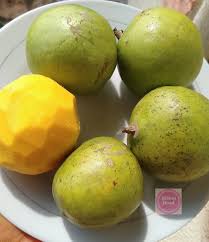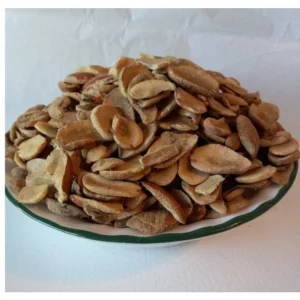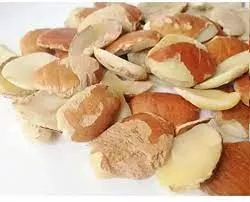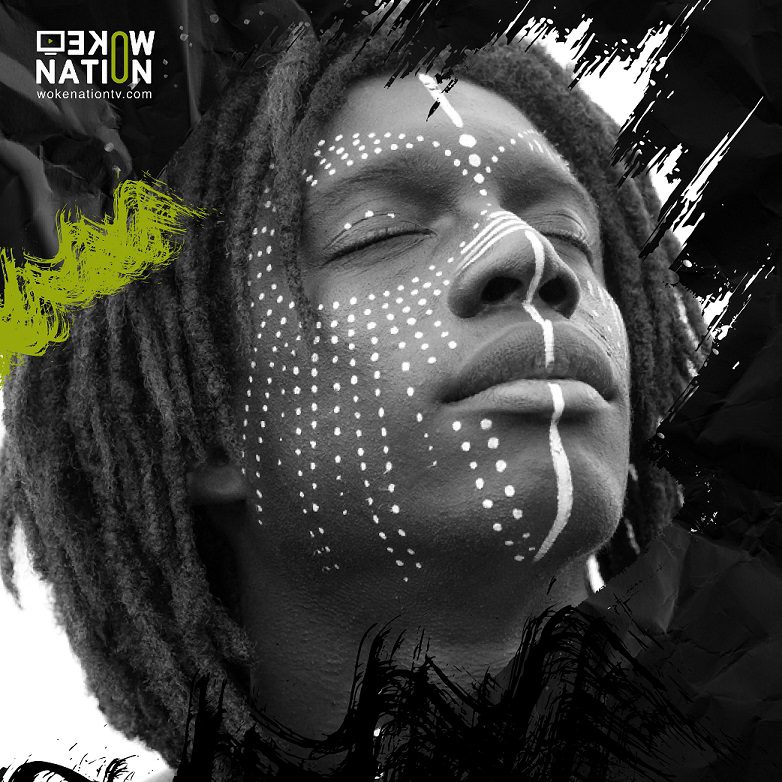You could be wondering where ogbono (Irvingia) seeds/kernel comes from, how it is processed, and so forth. It is derived from the Ugiri (Bush Mango) tree. The fruit resembles mango in shape, although it is rounder. The eating method is likewise identical, although the flavor changes.
The bush mango tree is common in Nigeria’s tropical locations. Ebonyi, Edo, and Northern Cross River are some of the most well-known locations for the sale of ogbono seeds. However, its popularity spread throughout Nigeria and Africa, including Gabon, Angola, Senegal, Guinea, Cameroon, Ghana, and Togo.
Other common names of Ogbono fruit/seed include:
- Dika nuts
- African Bush Mango
- Bush mango
- Wild mango
- Ogbono (Igbo name for the seed)
- Ugiri (Igbo name for the fruits)
- Apon (Yoruba)
Surprisingly, many people don’t know that Ugiri (Bush mango) comes in two varieties. Each kind is made out of a unique variety/type of ogbono seed.
See 12 health benefits of African bush mango
The Bitter (Ugiri) Bush Mango Irvingia Wombolu provides the major ogbono kernel/seed, while the Sweet (Ugiri) Bush Mango Irvingia Gabonensis provides the other ogbono seed.

They have distinct harvesting seasons, somewhat varied colors, and different slimy (drawing) powers.
Let’s examine them in depth for better understanding.
1. Irvingia Wombolu (Bitter Bush Mango)
Irvingia Wombolu tastes harsh and bitter. Some people claim that it causes mild mouth discomfort. As a result, because the fruit is not edible, subsistence farmers avoid even growing it.
Commercial farmers plant them just for the seeds. As a result, you’ll see it more in the wild or in distant farmlands. As a result, it is not as popular as the Sweet bush mango.
The ogbono seed from Irvingia Wombolu is known as Ado or Ado ogbono on the market, whereas the ogbono seed from Irvingia Gabonensis is known as Ugiri.


2. Irvingia Gabonensis (Sweet Bush Mango)
Another source of ogbono seeds is Mango Irvingia Gabonensis. The fruits are tasty and delicious. its also known as ugiri.
Though it is more frequent in the market than Irvingia Wombolu, the fruit is not as common as mango fruits.
The reason for this is that commercial farmers plant them for their seeds rather than their delicious fruit pulp. The case is not the same with subsistence farming, as they focus on both the fruits and the seeds.
Differences between Irvingia Wombolu and Irvingia Gabonensis
| Features | Irvingia Wombolu | Irvingia Gabonensis |
| Weight | Smaller in size | Thicker and broader |
| Taste (fruit) | Bitter | Sweet |
| Photochemical properties (alkaloids, saponins and tannins) | Higher amount | Lesser amount |
| Flavour (seed) | Rich nutty flavour | Less flavourful |
| Texture | Slimier (draws) when cooked | Doesn’t draw much |
| Fruiting season | October – January | May – September |
| Viscosity | High | Low |
| Colour | Darker | Light brown and smoother |
What the Bitter Bush Mango fruit lacks in flavor and taste, it makes up for in seeds. Also, keep in mind that identifying these ogbono seeds might be difficult, even for certain sellers. Another significant point is that, while ugiri ogbono is lighter in color, it may also deepen over time (As ogbono seeds get old, they get darker in color.)
How to Process Ugiri Fruit Ogbono Seeds
The procedures are the same regardless of whatever ogbono fruit you use. When the fruits get ripe, they fall and decay on their own. Allowing it to rot makes it easier to remove the seeds. You may also choose to pick them. Some people consume the fruits of the delicious bush mango and leave the pit to dry.
However, you must
- Retrieve the pits/nuts after they dry.
- Open them using stones or machetes/cutlasses.
- Remove the seeds.
- Before storing the seeds, spread them out to dry thoroughly (air dry).
Ogbono that has been properly dried can survive for 6 months or longer without becoming moth or rotten. No more buying the wrong kind of ogbono. Furthermore, many sellers mix both and offer it in place of Irvingia Wombolu, which is more expensive. So the next time you go shopping, you’ll be able to tell the difference.
Comment below and let us know what you think.
Sources – Bloomhood

